The skills that beginners must learn to pull flowers and milk foam! How does the dense milk foam come out?

The daily mental journey of a friend who has just learned to foam is: I don't want to give up! No, stick to it. Ah, it's thick again, just give up! Don't give up, do it again! I know you will say: please take down the surveillance! As an essential part of making latte, the degree and quality of foam will affect the visual and tactile experience of a cup of latte.
Why can milk form a stable foam? what is the principle of milk foam?
What affects the stability of milk bubbles is that the casein colloidal particles in milk protein and the existence of casein colloidal particles with whey protein make the milk liquid surface form tension, and a large number of air bubbles of different sizes are formed when the steam hits the milk liquid surface. then adjust the position of the steam stick to make the milk whirlpool "chopped" larger bubbles, so as to obtain a smooth surface of fine milk bubbles.
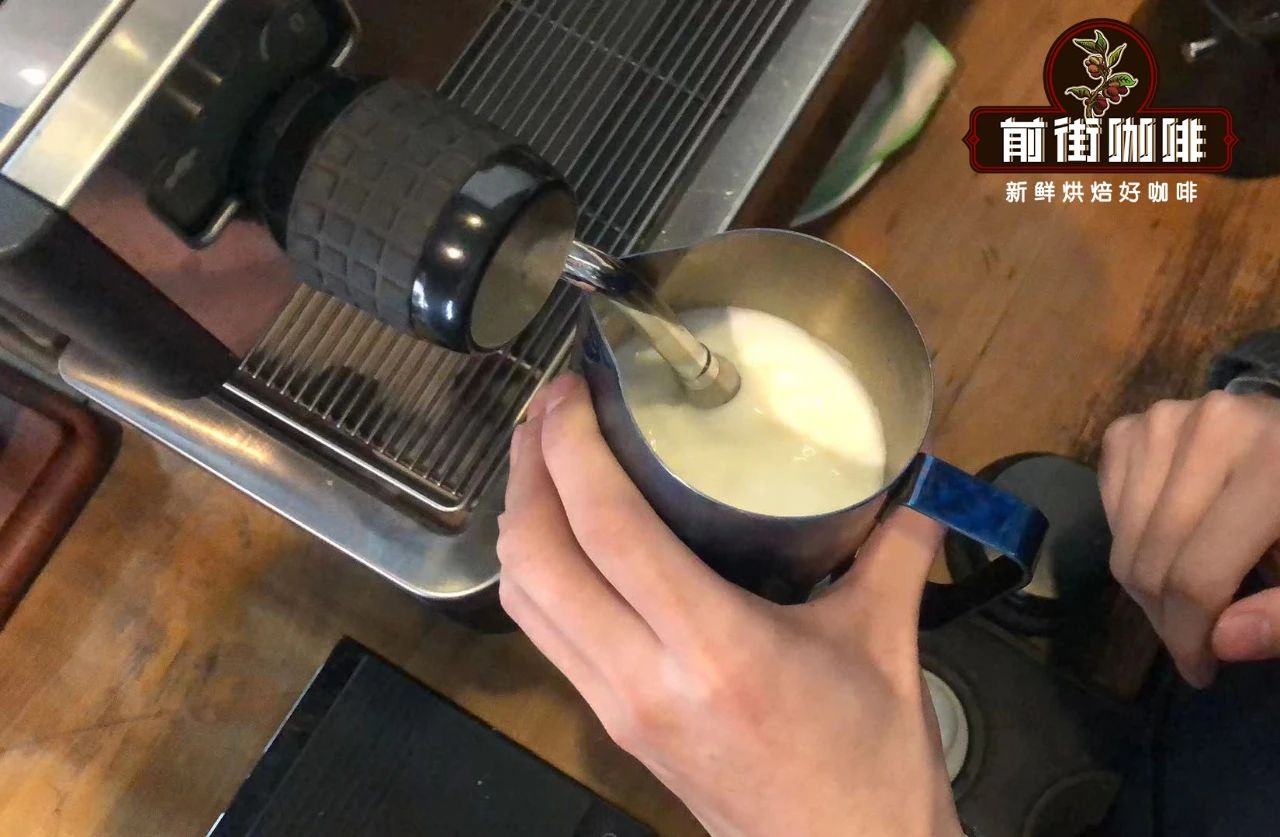
Under normal circumstances, whey protein is hydrophilic in appearance and slowly "unfolds" after stirring or heating, exposing the hydrophobic part. These parts will stick to the resulting bubbles, reduce the surface tension of the bubbles, reduce the blasting speed, and make the milk bubbles more stable.
Open the steam bar button, you will find that there are 4 air vents (different brand models will be different, there are single hole, 2 hole, 3 hole), if we are half buried in the milk surface, open the steam bar button, at this time to air to blow off the foam; if all buried in the milk, it will not dismiss the foam, but will only heat the milk through hot steam!
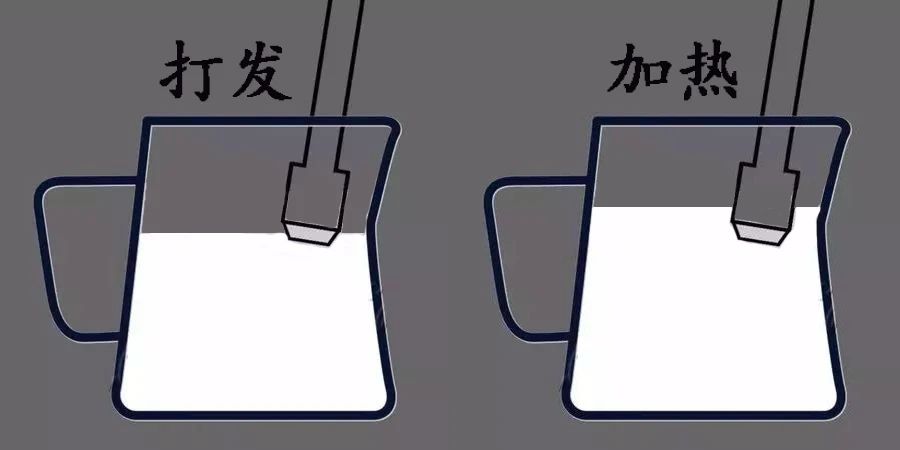
Demonstration of passing away milk foam
1. The best capacity of milk: a reasonable capacity is needed to dispense with milk. It is recommended to use 40-60% of the total capacity of the milk tank in front of the street. Too little milk and too much milk test the technology. Of course, in addition to this factor, it also depends on the amount of milk you actually use in a cup of coffee to avoid excessive waste. In the past, the capacity of the milk tank used in the street was 550ML, and the amount of milk injected was 250ML (just at the bottom of the nozzle).
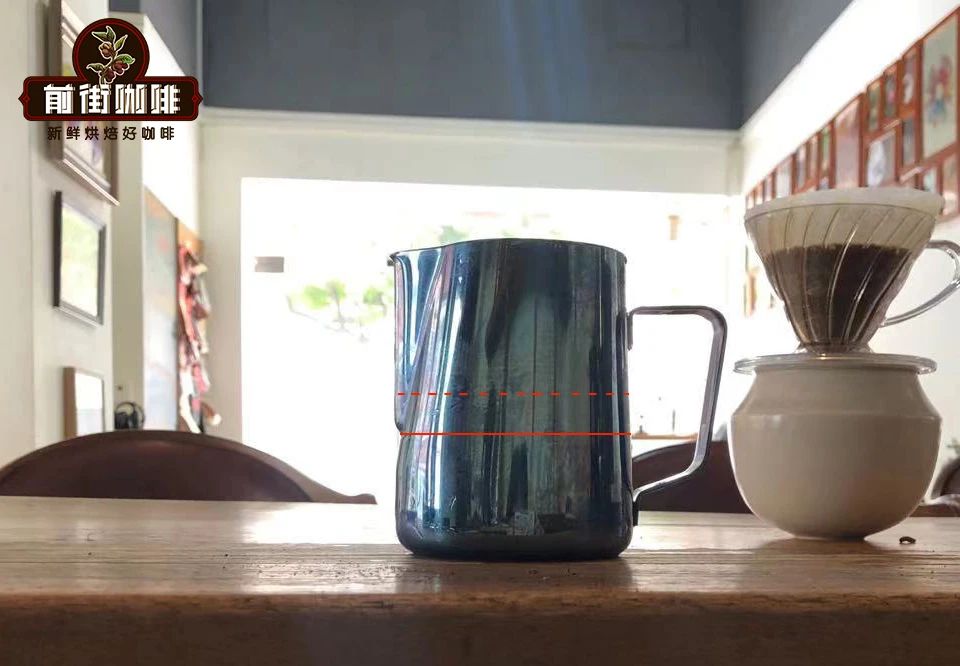
(the solid line is the amount of milk, and the dotted line is the capacity after discarding)
2. Dispatch position: before preparing to dismiss, turn on the steam bar switch and release the condensed water vapor (turn off the switch after release). Then pull out the steam rod at an angle of 45 degrees, using the cylinder nozzle to stabilize the position of the steam rod, the steam vortex is counterclockwise, the position of the steam rod is on the right side of the cross in the center of the liquid level, and the steam rod is semi-buried.
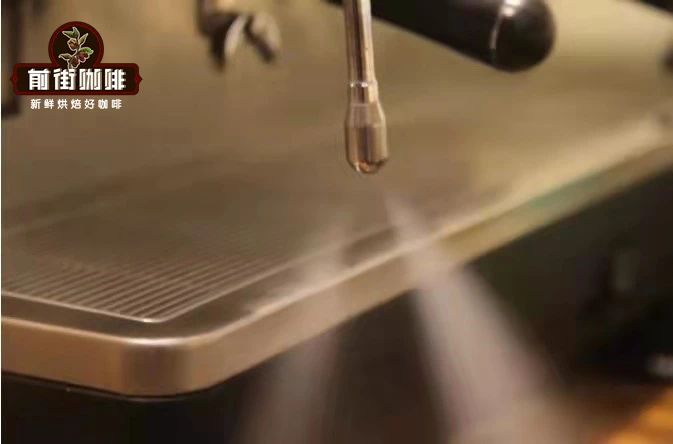
3, the killing stage: turn on the steam switch and you will hear the sound of "squeak-squeak". At this time, the time spent is different according to the thickness of the foam required (the longer the time is spent, the thicker the foam is). Usually beat 50% of the milk to 60% of the amount (latte foam thickness) to pass the time in about 3 seconds. The direction in which the milk turns uniformly forms a whirlpool.
4. Beating stage: at this time, the steam hole needs to be fully buried, only heated and no longer sent. Do not bury the steam hole at the bottom, it is recommended to be in the milk foam layer, which is beneficial to make the rough foam delicate. When will it stop? It depends on your milk temperature, which is generally controlled between 55 and 65 ℃. Too high temperature can denature proteins (generally speaking, thermal denaturation of proteins in food occurs at about 60 ℃).
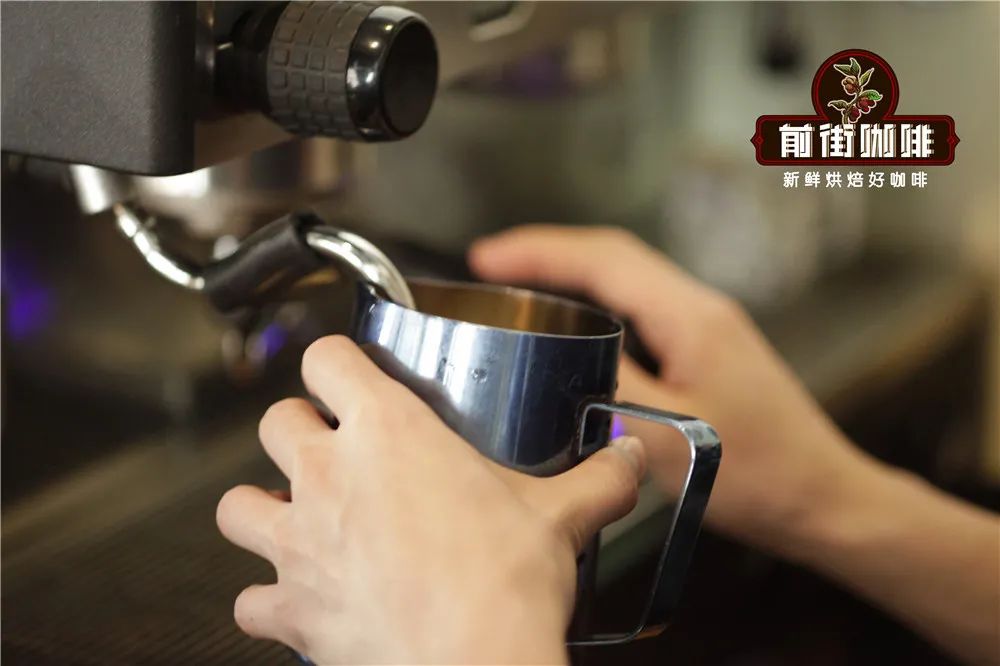
Some common problems in beginner milking, you can try the following tips!
Problem 1: spilling milk in the process
This is a very dangerous thing. For beginners, there is no stable control and control over the angle of the steaming stick and the depth of the milk placed at the front of the steaming stick (the word will be used below). There will be a steam or heated to the back of the hand is unstable, the extent of moving the milk tank is too large to cause the vent to come into contact with the milk surface, and the impact of the steam makes the milk spatter.
Tip ①: keep the milk tank in contact with the steamed milk stick all the time
When the novice can not steadily control the movement of the nipple, Qianjie suggests using the nipple as the fulcrum to let the edge of the vat come into contact with the steamed milk stick. Whether it is to turn the angle of the milk tank or move up and down, it is necessary to maintain the state of contact between the two, to avoid suddenly "hanging", steam rushing out of the milk.
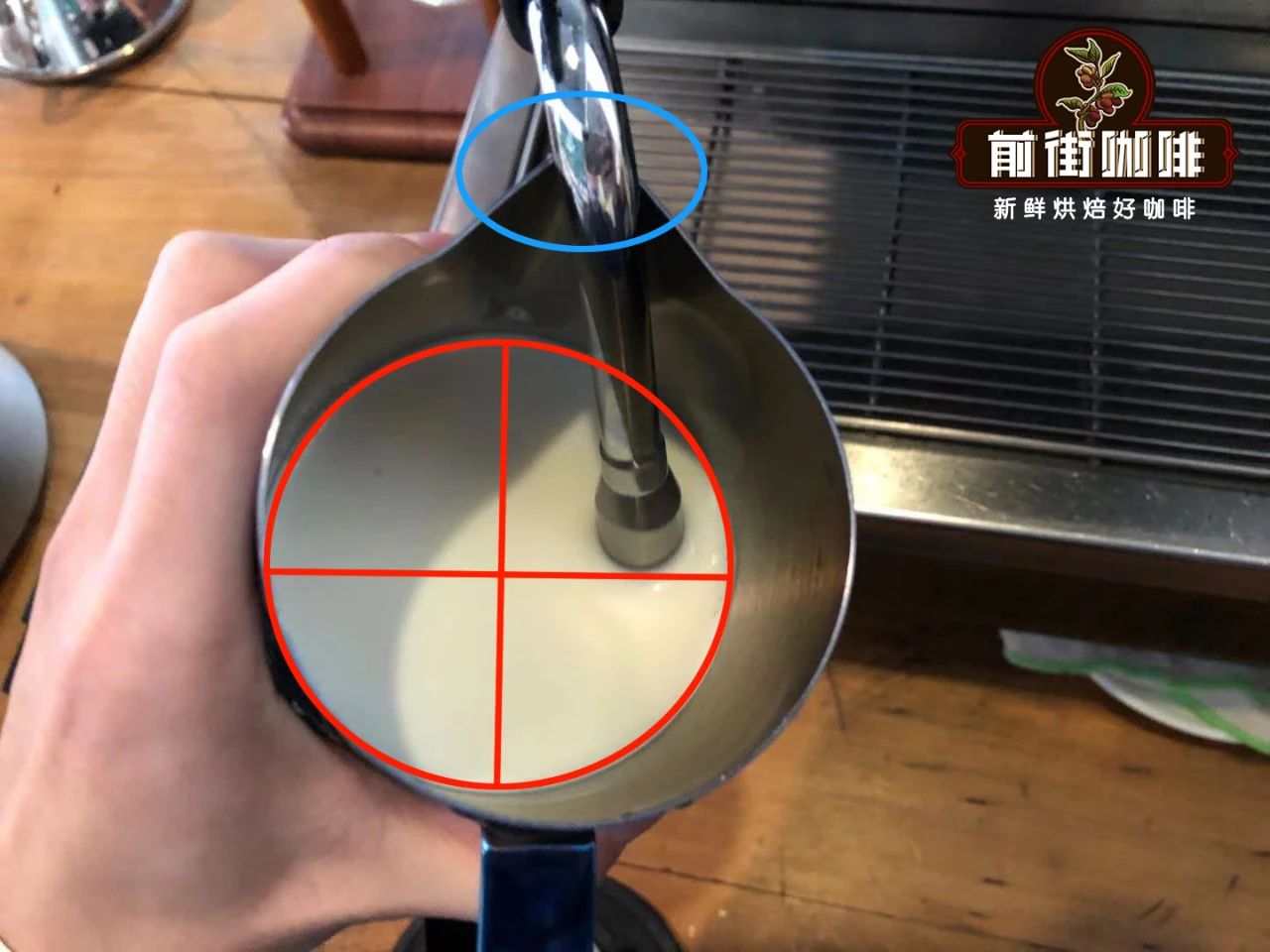
Question 2: is the milk foam not delicate?
What makes beginners collapse is not that the flower drawing is not successful, but that no matter how the foam is played, it is not delicate, and there are a lot of coarse bubbles. After drinking with the coffee, the touch of the mouth will give you such a signal: do you think I am happy?
Tip ①: turn on the steam before you dispense the milk.
When the steam in the steam pipe of the semi-automatic coffee machine cools, it will become water residue and remain in the tube, so before each foaming milk, please discharge the steam until no water is ejected from the tube. The milk foamed with water steam will produce large bubbles.
Tip ②: the angle of the steamed milk stick into the milk tank is 45 degrees.
A 45-degree angle is the direction of 2-3 o'clock or 9-10:00 of the milk jar. Using this angle to dismiss the milk can make the milk form a small whirlpool as soon as possible, and the appearance of the whirlpool can make the thicker milk bubbles "involved" in the liquid surface.
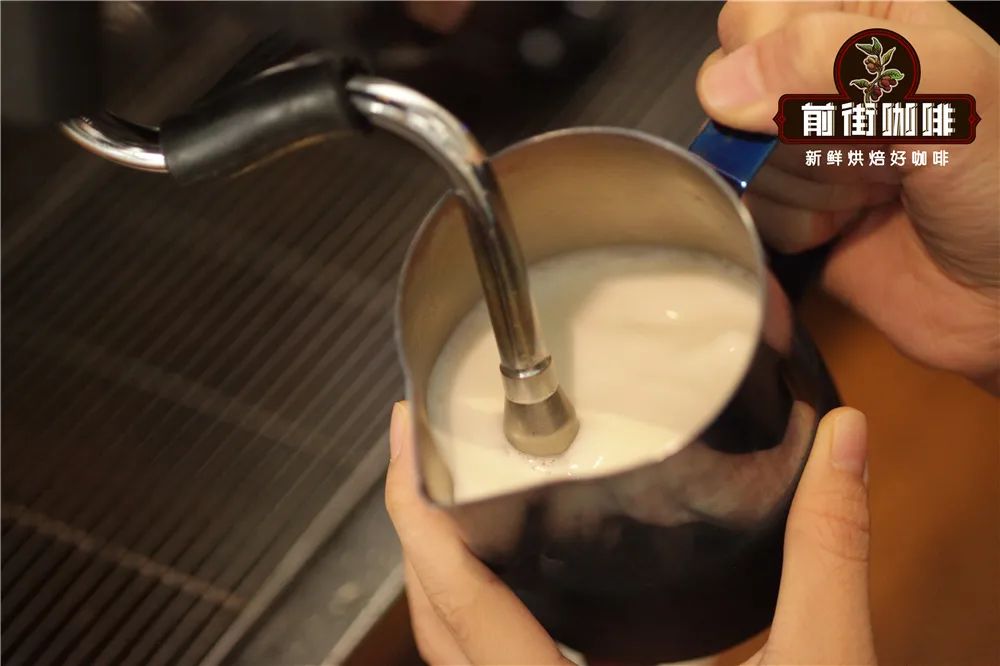
Tip ③: put the steam head into the milk with a depth of 0.8cm-1cm.
The steam head is not put as deep as possible, after all, the main purpose of milk is to pump air into the milk. If it is too deep, the steam hole cannot touch the air to form a vortex. If it is too shallow, the steam hits the liquid surface, forming rough bubbles and splashing milk.
Problem 3: the foam is too thick.
The thickness of the foam depends on the foam produced when the steam is in proper contact with the liquid surface, which is called the inflation process. The longer it takes to inflate, the more foam is produced, and the thicker the foam will be.
Tip ①: the inflating process only needs to be "squeaked" for 4-5 times.
Put the steam head into the 0.3cm and turn on the steam switch, and you will hear a "squeak-squeak" sound. This is the inflatable stage, and the thickness of the milk foam for making lattes is 1cm, so we don't need to over-inflate. When you hear the squeak 4-5 times, you can adjust the depth of the milk stick back to 0.8-1cm, maintain a 45-degree angle to create a whirlpool to eliminate the coarse bubbles and heat it to the appropriate temperature.
Question 4: how to judge the temperature of milk?
Is the temperature of the milk really that important? important! The ideal temperature for milk is 55-65 ℃, with a maximum of no more than 70 ℃. Lactose and other sugars are most "active" in these temperature ranges. When milk is mixed with coffee when it reaches this temperature range, you can feel the sweetness of both smell and taste in this cup of milk coffee without sugar.
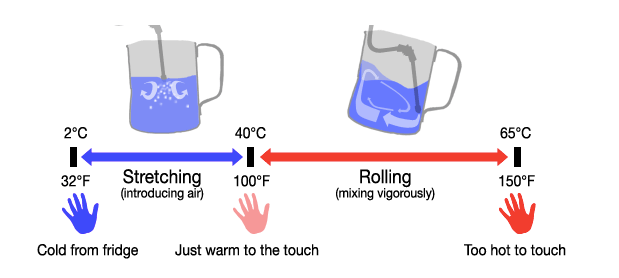
Tip ①: use a thermometer and don't exercise the iron palm in the first place.
Use the digital thermometer to insert the thermometer into the milk tank and then start to send it away, during which you slowly feel the change in the temperature of the milk tank with the palm of your hand. Be careful! For example, if you need to dispose of 55 ℃ of milk, you can stop heating when the thermometer says 53 ℃, and the milk will rise by 1-2 ℃ after stopping.
Professional coffee knowledge exchange more coffee bean information please follow the coffee workshop (Wechat official account cafe_style)
For more boutique coffee beans, please add private Qianjie coffee on Wechat. WeChat account: kaixinguoguo0925
Important Notice :
前街咖啡 FrontStreet Coffee has moved to new addredd:
FrontStreet Coffee Address: 315,Donghua East Road,GuangZhou
Tel:020 38364473
- Prev

Teaching beginners how to make dense and meticulous milk bubbles
Professional coffee knowledge exchange more coffee bean information please follow the coffee workshop (Wechat official account cafe_style) what is the dense milk foam? The first standard is that the surface should be reflective. This statement is very objective and direct, at least it can be used as a standard to be seen by the naked eye. The second criterion is that there is no coarse foam on the surface. This needs to be in place.
- Next

Why do you need milk foam? Learning to pull flowers starts with milk foam! What kind of cup should I use to make milk foam?
Professional coffee knowledge exchange more coffee bean information Please follow the coffee workshop (Wechat official account cafe_style) Why does coffee say that coffee is a part of your life? Because you may not think of the original skill of pulling flowers with a cup of coffee, which is also a must-kill skill to coax a girl! You may not be able to cook and bring a perfect feast to your partner, but you can also become a warm man and prepare a meal for her.
Related
- What is the meaning of lactic acid fermentation with coffee bean treatment?
- How to judge the state of foam by sound?
- How does the latte pull out the unicorn pattern? Come to get for a little trick to improve the flower pull!
- Will flower pulling affect the taste of the latte?
- Do you know the history of coffee?
- The difference between honey treatment and sun washing what is raisin honey treatment?
- What kind of milk can a novice use to make coffee foam to keep the foam longer? The correct method and skills of milking tutorial sharing
- Why do washed coffee beans taste sour? Flavor characteristics of washed Coffee
- Introduction to the skill of how to practice the size and height of water injection around the circle of hand-brewed coffee
- How do beginners practice coffee flower drawing from scratch?

